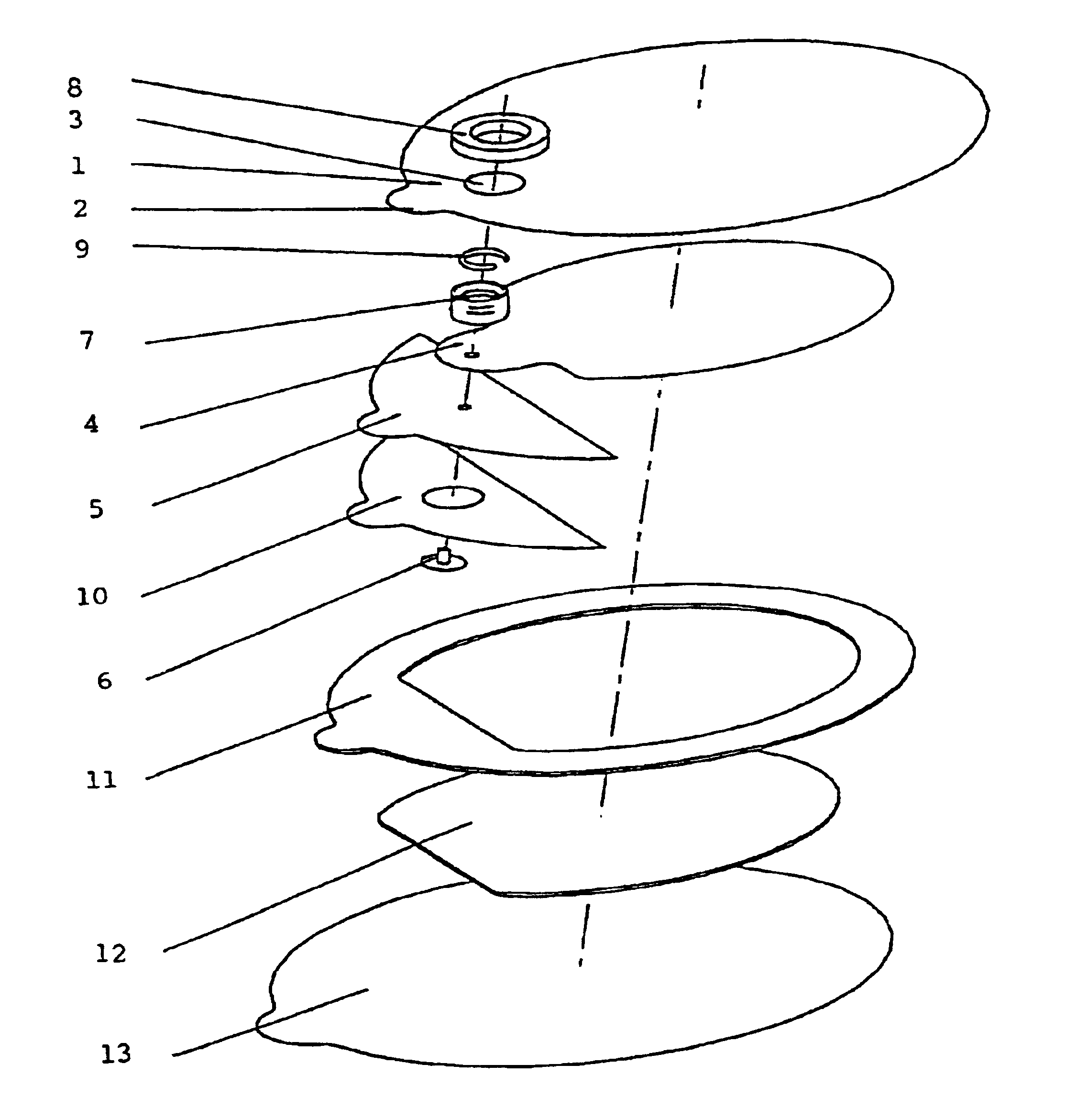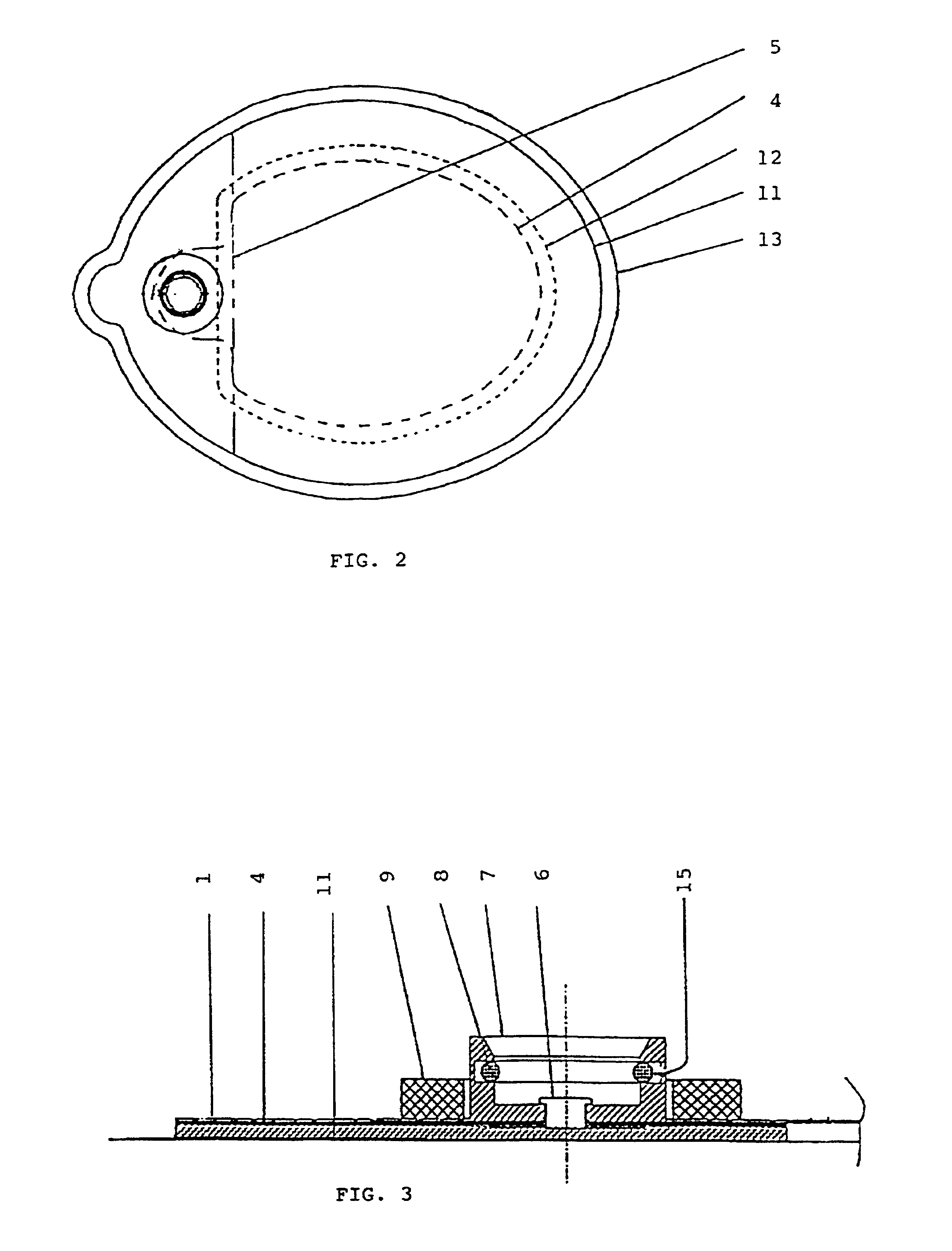Skin electrode
a skin electrode and electrode technology, applied in the field of electrodes, can solve the problems of skin burns of patients during defibrillation, tendency of baseline to drift, and risk, and achieve the effect of reducing shelf life and improving shelf li
- Summary
- Abstract
- Description
- Claims
- Application Information
AI Technical Summary
Benefits of technology
Problems solved by technology
Method used
Image
Examples
example
[0044]A precursor for the electrically conductive gel was prepared by mixing 7,670 g water, 25 g KCl and 2,250 g acrylic acid during agitation. The agitation continued until all the KCl was dissolved. Subsequently, 24 g triethyleneglucol dimethacrylate and Darocure 1173 was added and the mixture was agitated in the dark for further 30 min. The precursor may then be cured by exposure to ultra-violet light. The pH value of the cured gel was 2.
[0045]Skin electrodes were prepared by casting the precursor for the gel in a thickness of 1 mm on a liner covered by a tissue and subsequently curing by UV radiation. The gel plate was subsequently assembled with a matrix. The matrix was prepared by adhering a tin foil plate to the substrate and subsequently attaching the frame to the substrate as well as mounting the point. Finally, the liner was covered with a top liner.
[0046]Multi functional defibrillation electrodes prepared as depicted above were tested in accordance with the following elec...
PUM
 Login to View More
Login to View More Abstract
Description
Claims
Application Information
 Login to View More
Login to View More - R&D
- Intellectual Property
- Life Sciences
- Materials
- Tech Scout
- Unparalleled Data Quality
- Higher Quality Content
- 60% Fewer Hallucinations
Browse by: Latest US Patents, China's latest patents, Technical Efficacy Thesaurus, Application Domain, Technology Topic, Popular Technical Reports.
© 2025 PatSnap. All rights reserved.Legal|Privacy policy|Modern Slavery Act Transparency Statement|Sitemap|About US| Contact US: help@patsnap.com



